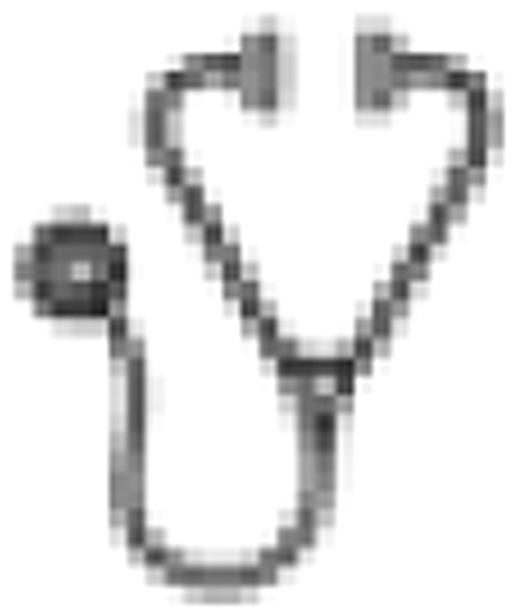Abstract
Bcr-Abl kinase domain (KD) mutations have been documented in a variable proportion of residual Ph+ cells in some patients (pts) with stable response to imatinib. In general, the higher the sensitivity of the screening method, the greater the number of pts found to harbour mutations – although the clinical significance of low-level mutations is still controversial. Nilotinib is an imatinib derivative more selective and more potent in Bcr-Abl inhibition – with reported major molecular response (MMR) rates at 12 months ranging between 44 and 85%. We wondered whether low-level Bcr-Abl KD mutations are detectable in pts in MMR on nilotinib. To address this issue, we retrospectively analyzed the samples collected after 12 months of therapy from 12 pts enrolled on the GIMEMA CML working party study of nilotinib 400 mg BID as frontline treatment of CML. These pts had all achieved MMR (>3-log reduction in Bcr-Abl transcript according to the IS) between 3 and 6 months from nilotinib start and had a Bcr-Abl/Abl ratio ranging from 0.009%IS and 0.02%IS at the time of analysis. In all 12 pts, MMR was maintained at last follow up (24 months after nilotinib start), with four pts achieving complete molecular response (CMR; >4.5-log reduction) at 18 months and one at 24 months. Pts were equally distributed across Sokal risk categories (low Sokal risk, n=4; intermediate Sokal risk, n=4; high Sokal risk, n=4). Screening for low level mutations was performed by cloning the Bcr-Abl KD (a.a.240-502) in a bacterial vector and sequencing 150 independent clones for each patient. To rule out false positive results, a mutation was considered to be present in a sample if it was detected on both strands of two or more independent clones. The KD of Abl in 3 healthy individuals was analyzed in parallel. Our approach showed evidence of Bcr-Abl KD mutations in only 1 out of 12 pts analyzed. In this high Sokal risk patient, a Q346L mutation was detected in 3/150 independent clones, and an additional T315I mutation was present in 2 out of these 3 clones. The Q346L has never been reported in imatinib-resistant pts, neither is it among the mutants emerged in the in vitro random mutagenesis screenings for nilotinib-resistant mutations – hence it should be devoid of any clinical relevance. The T315I, in contrast, is known to be highly insensitive to nilotinib both in vitro and in vivo. Nevertheless, in this patient the Bcr-Abl transcript level continued to decline down to CMR (achieved after 24 months from nilotinib start). It may also be hypothesized that the Q346L-T315I double mutant may have decreased degree of resistance with respect to the T315I mutant. The remaining 11 pts scored negative for mutations – showing only evidence of some single, mutated clones as also the three healthy individuals did. To increase the number of pts analyzed and assess whether high Sokal risk pts are more prone to develop low level mutations, we have now set up a massively parallel amplicon sequencing approach of the Abl KD on the Roche 454 GS FLX instrument, allowing to increase both throughput and sensitivity (a 100.000x coverage will allow to detect mutations with a lower detection limit of 0.01%). Our current results suggest that a) low level Bcr-Abl KD mutations seem to be very rare in pts in MMR after 12 months of nilotinib therapy, a milestone achieved by the majority of pts. This may be due to the higher efficacy of nilotinib resulting in a more rapid clearance of the reservoir of Ph+ cells where mutations arise; b) as hypothesized by some authors, tyrosine kinase inhibitor-resistant mutations at low levels do not always predict for subsequent relapse and should not trigger changes in therapy.
Supported by: European LeukemiaNet, AIL, AIRC, PRIN 2008, Fondazione del Monte di Bologna e Ravenna, FIRB 2006, PRIN 2008, Ateneo RFO grants, Project of integrated program (PIO), Programma di Ricerca Regione – Università 2007 – 2009.
Rosti:Novartis: Consultancy, Honoraria; BMS: Consultancy, Honoraria. Baccarani:Novartis: Consultancy, Honoraria; BMS: Consultancy, Honoraria. Martinelli:Novartis: Consultancy, Honoraria; BMS: Honoraria; Pfizer: Consultancy.

This icon denotes an abstract that is clinically relevant.
Author notes
Asterisk with author names denotes non-ASH members.

This feature is available to Subscribers Only
Sign In or Create an Account Close Modal